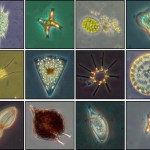object recognition
Is this science writer jazzed that ninth-grade girls from a religious girls’ school in Jerusalem won a space/science contest? You bet your sweet solar-powered spacelab she is! It is not just that these girls beat out a lot of other classes (over 400), or that they break more than one stereotype. They also came up with a pretty clever idea for studying the Sun: Send a spacecraft to scatter assorted nanolabs all over an asteroid that is about to pass close to the Earth on its way to the Sun. The contest is held every year in memory of Israeli astronaut Ilan Ramon, who went down with the crew of…
THOUGHTS and actions are intimately linked, and the mere thought of an action is much like actually performing it. The brain prepares for an action by generating a motor simulation of it, praticising its execution of the movements by going through the motions invisibly. Seeing a manipulable object such as a tool, for example, automatically triggers a simulation of using it - a mental image of reaching out and grasping it with the hand that is nearest to the handle.
Motor simulations and movements are known to influence thought processes. Magnetic stimulation of the motor cortex…
Imagine with me, for a moment, that the zombie invasion has begun. You try to escape, but the zombies are just too much to handle. You can't run fast enough. They're everywhere. Your favorite science bloggers have been turned into zombies and they're coming for you.
Figure 1: Thanks to Joseph Hewitt of Ataraxia Theatre for providing us with these awesome illustrations of zombified sciblings! Left to right: Christie, Sci, Bora, me, & Peter and Travis. Click on each to embiggen.
I'm sure you've always wondered what would happen as a zombie ate through your brain. How would it feel? What…
Today for Monday Pets, we're going to go old school and talk about vision.
Vision is arguably our most (intentionally) utilized sensory system, so its pretty important to figure out how it works. And it's what David Hubel and Torsten Wiesel set out to investigate starting in the late 1950s. Ultimately, their work would get them a Nobel Prize in Physiology or Medicine, in 1981.
Basically, they took a bunch of cats, anesthetized them, and showed them patterns of light on a screen. Meanwhile, some microelectrodes were placed in various precisely determined spots in the cat's visual cortex, and…


